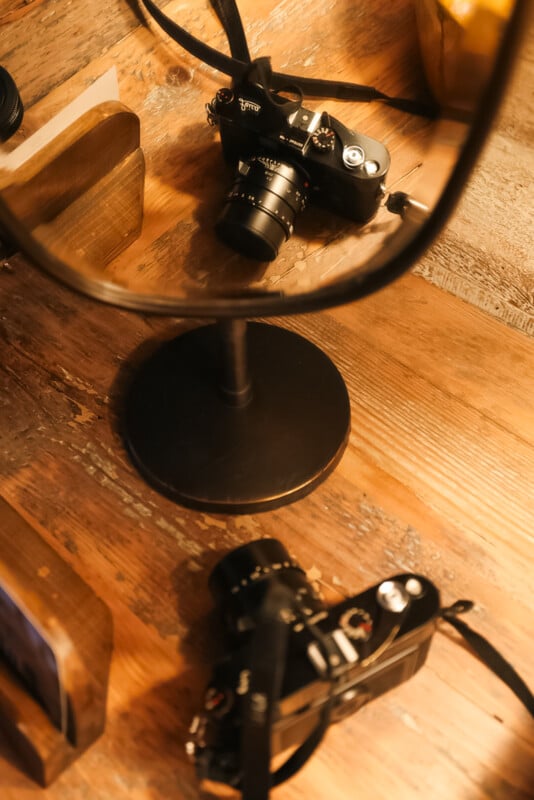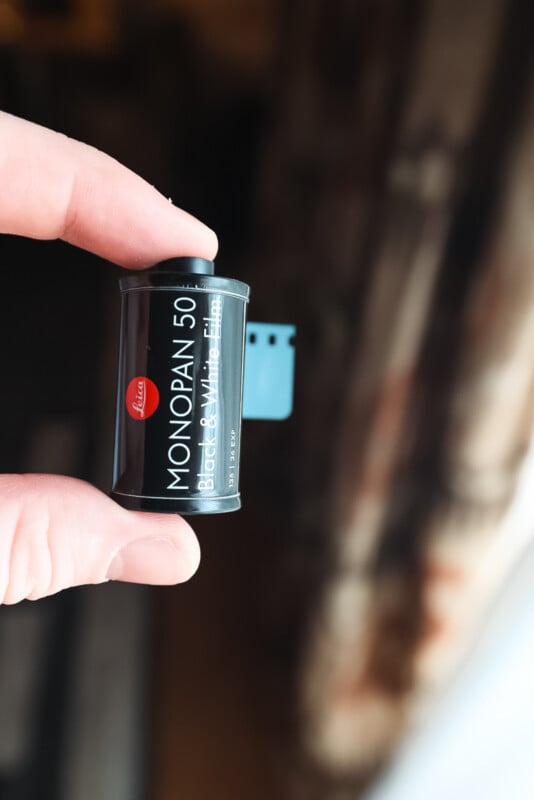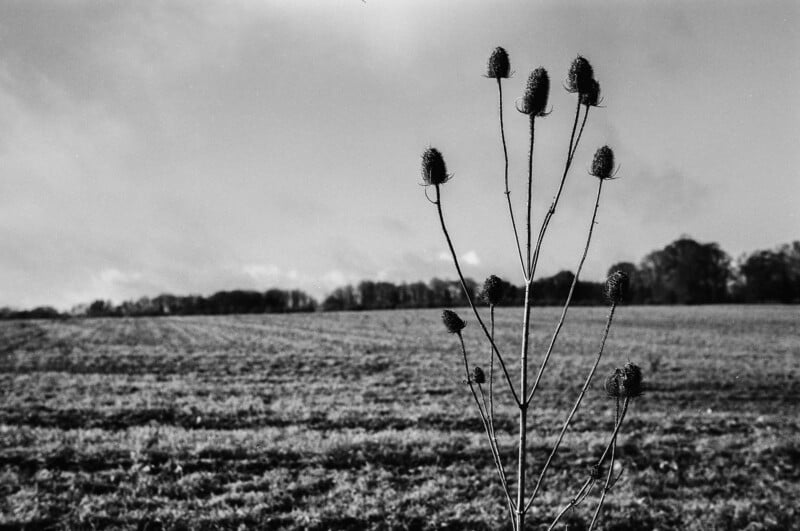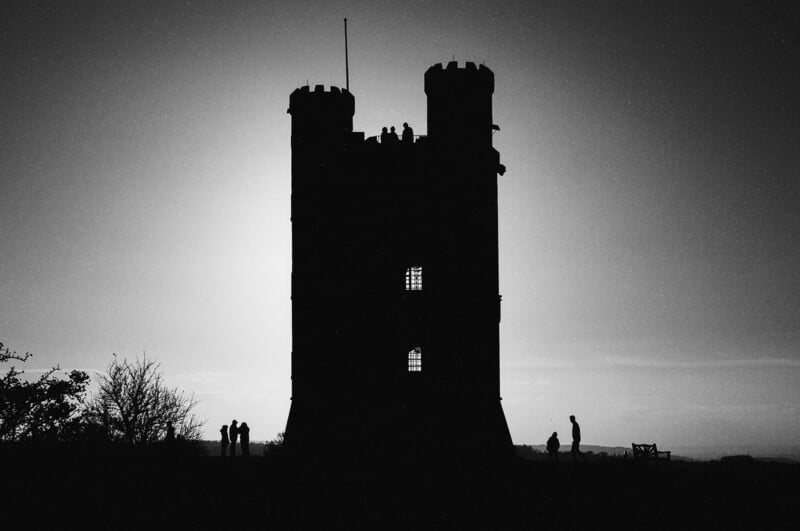![]()
The “MP” in Leica MP stands for “Mechanical Perfection.” That’s a big claim that I decided to put to the test with a roll of
Firstly, let’s talk about how gorgeous this Leica MP is: coupled with the Leica Summilux-M 50mm f/1.4 ASPH, I couldn’t stop looking at it. Slinging it over my shoulder, I proudly wore it like a fashion accessory, hoping that someone might recognize it and think, “Hey, that’s a Leica MP, what a cool guy.”


But carrying around an analog camera with no film inside of it is plumbing new lows, so after loading in the roll of Leica Monopan, it was time to start dipping into my 36 exposures. Now, I have used a Leica M11 before, so the rangefinder focusing aspect wasn’t totally alien to me. Nevertheless, I was wary because I know how difficult it can be to nail focus on a 50mm lens attached to an analog camera — having missed plenty of shots on my Canon AE-1. But spoiler alert: I nailed the focus on every single shot. Rangefinder: 1 – Manual Focus: 0.

Now, this camera works without batteries, which is cool. Obviously I would have been up the creek without a paddle had the battery died, since it would have left me guessing the exposure, but it’s nice to know that I could have carried on taking photos even if it did die.
![]()
Speaking of the light meter system inside the camera: my God, it is so simple and intuitive. After initially being intimidated by the MP, it was a pleasure to use it as everything started feeling so natural. It works by pushing around those beautiful dials on the body and lens that control the shutter speed and aperture, as you do so, two arrows and dots inside the viewfinder tell you the exposure. Once you hit the dot between the arrows, you know you’re in business. No wonder all those famous war photographers used it to shoot in hyper-stressful situations.
Once I’d wandered around the beautiful Cotswolds, sticking my nose into places it wasn’t welcome, I hit the end of the film and rewound it. There’s always a vague fear that you’ve messed up the film somehow, but by then I was confident that the mechanically perfect Leica was recording my images. I just had to wait patiently for my scans after I posted off my film.
![]()
The Photos
50 ISO is a very, very slow film. And, as you can see in the photos, it meant I had to wait for a rare sunny day in England. Literally, all of these photos were shot in a single day — the only day of the trip where the clouds broke for a reasonable amount of time.
The first thing I looked for was the focusing, and as I already mentioned, that went exceptionally well; I’m now devastated that for future analog adventures I will be forced to soldier on with the standard SLR manual focus system.

![]()
The photos themselves are beautiful. Not the subjects of my photos, of course, but the way the light hits the film. It’s definitely the sharpest set of analog photos I’ve ever captured on 35mm. Not that I’m a veteran, but the pictures, to my eye at least, are notably clear. I think this is down to a combination of new technology being used on the Monopan film, and those gorgeous Leica optics.

![]()
![]()
![]()
![]()
![]()
![]()
![]()
![]()
My one complaint — and PetaPixel’s editor-in-chief Jaron Schneider picked up on this too — is that the highlights in my photos were a little overexposed. The photos you see on this page have been run through Lightroom and small adjustments have been made: contrast and highlights mainly. In most of the photos, there was enough data to bring the sky back in. Naturally, for my next roll (not that I have another one to shoot), I would factor this in and sway toward the left arrow on the MP’s light meter, but it’s worth noting. This film loves to blow highlights.
Would I buy this Leica MP and shoot Monopan 50 with it? Let me put it another way: would I like to stop writing at PetaPixel, leave my family, run away to a cabin in the woods with only my Leica MP, unlimited rolls of Monopan, and my own darkroom for company?
Why yes, yes I would.
Alternatively, I could trade in my Canon AE-1, but that would still leave me $5,000 short. I guess I’ll keep my day job.







